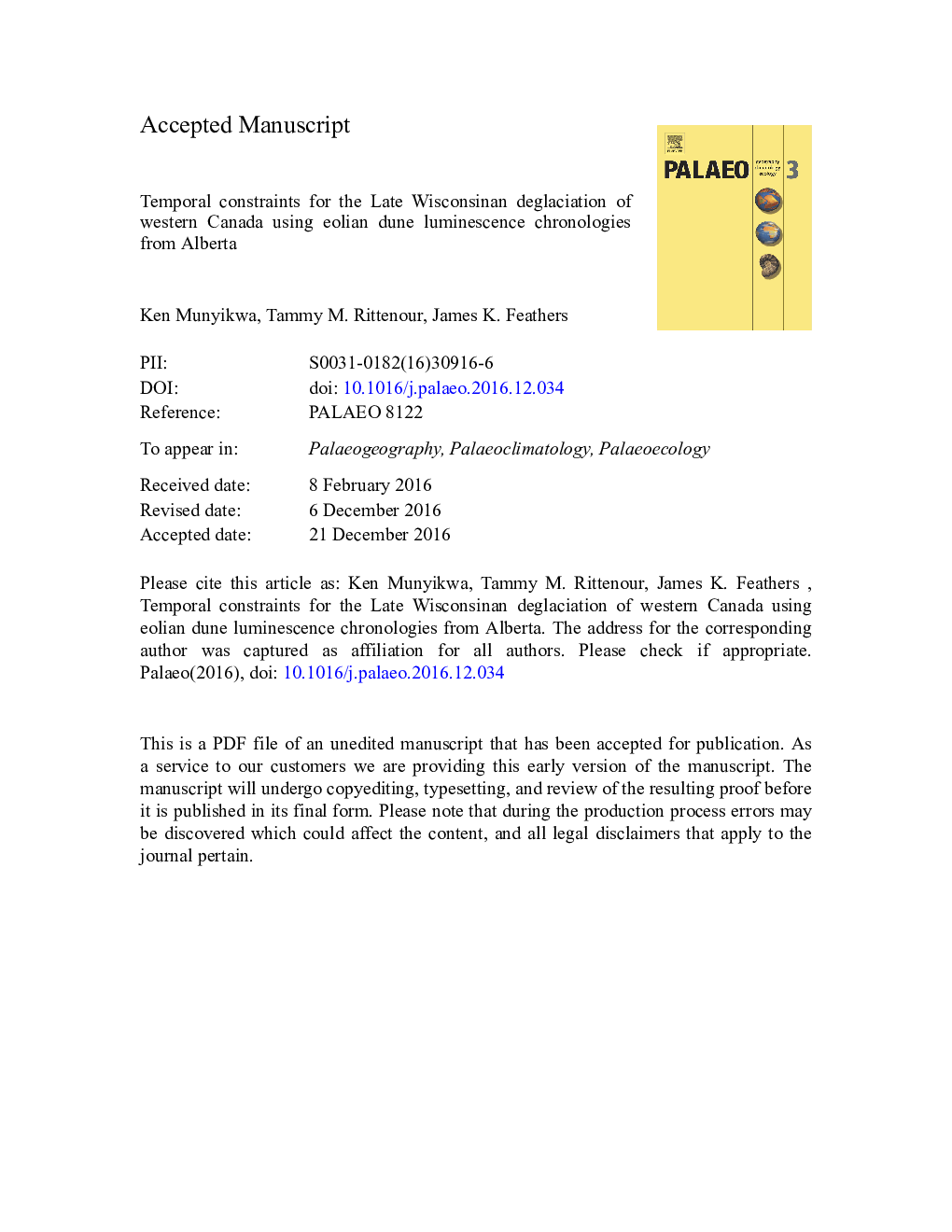| کد مقاله | کد نشریه | سال انتشار | مقاله انگلیسی | نسخه تمام متن |
|---|---|---|---|---|
| 5755918 | 1622122 | 2017 | 78 صفحه PDF | دانلود رایگان |
عنوان انگلیسی مقاله ISI
Temporal constraints for the Late Wisconsinan deglaciation of western Canada using eolian dune luminescence chronologies from Alberta
ترجمه فارسی عنوان
محدودیت های زمانی برای دور زدن ضایعات ناگهانی ویسکانسین در غرب کانادا با استفاده از زمان بندی های لومینسانس ائولین از آلبرتا
دانلود مقاله + سفارش ترجمه
دانلود مقاله ISI انگلیسی
رایگان برای ایرانیان
کلمات کلیدی
موضوعات مرتبط
مهندسی و علوم پایه
علوم زمین و سیارات
فرآیندهای سطح زمین
چکیده انگلیسی
The Laurentide Ice Sheet (LIS) covered most of Canada during the Last Glacial Maximum. Sometime after 20 cal. ka BP, the LIS began to recede from western Canada and, by 11 cal. ka BP, it had retreated from most of the province of Alberta. Due to the scarcity of datable contemporaneous organic materials, the precise timing of the retreat of the ice sheet from the region remains poorly constrained so that the chronology of the sequential positions of the ice sheet margin between 20 and 11 cal. ka BP is largely tentative. In this study, we use luminescence dating of postglacial eolian deposits, sourced primarily from glaciolacustrine and deltaic sediments in central and northern Alberta, to provide an updated chronology for the retreat of the LIS from the region. We examine 14 new and 13 previously published quartz optically stimulated luminescence (OSL) ages, as well as 19 previously published K-feldspar infrared stimulated luminescence ages. The chronologies are used to constrain successive regional ice sheet margin positions that are geomorphically recognizable across the region between 16 and 11 ka (calendar years). These data suggest that the LIS may have retreated from central Alberta earlier than portrayed in radiocarbon derived deglaciation models. We propose that the OSL chronology from postglacial dunes constrains the deglaciation of the region more accurately because luminescence dating does not rely on the development of vegetation to produce material for dating. Implications for the revised chronology include an improved timing of the emergence of an ice-free corridor that may have been used for Paleoindian migration into the Americas as well as enhanced age constraints on when meltwater drainage routes to the Arctic became open in relationship to the Younger Dryas. The chronology could also provide improved constraints for geophysical models that reconstruct regional isostatic rebound which followed deglaciation.
ناشر
Database: Elsevier - ScienceDirect (ساینس دایرکت)
Journal: Palaeogeography, Palaeoclimatology, Palaeoecology - Volume 470, 15 March 2017, Pages 147-165
Journal: Palaeogeography, Palaeoclimatology, Palaeoecology - Volume 470, 15 March 2017, Pages 147-165
نویسندگان
Kennedy Munyikwa, Tammy M. Rittenour, James K. Feathers,
